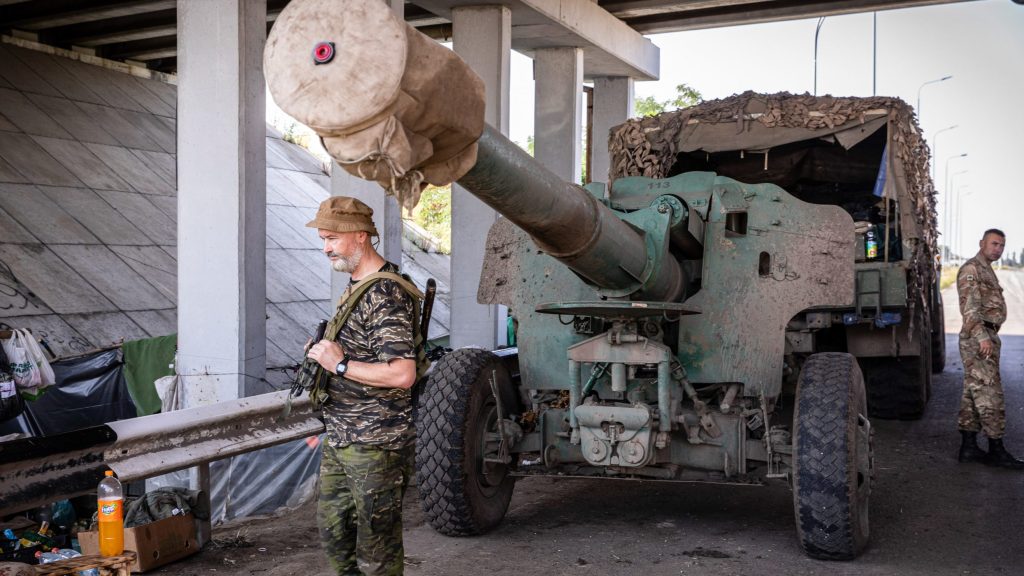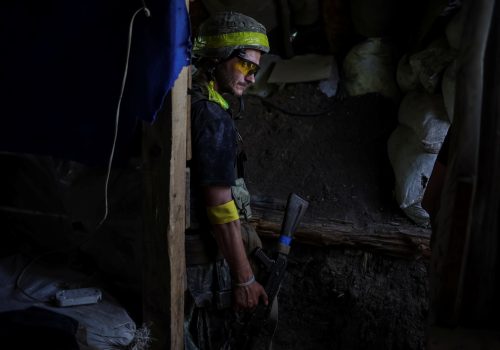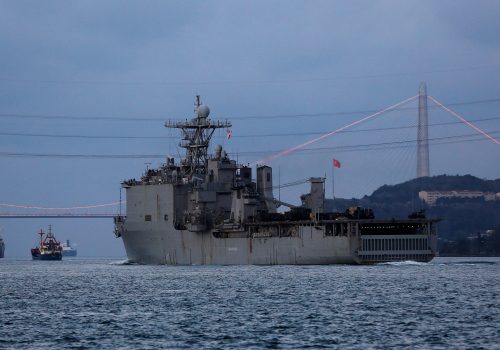After weeks of anticipation, the Ukrainian military this week appears to have launched its long-awaited counteroffensive against Russian forces in occupied portions of the southern Kherson and Mykolaiv regions. While it amounts to a major moment in the six-month-long war, it’s still unclear exactly how the operation will play out—or whether it will succeed.
With officials and analysts closely watching to see whether Ukraine has what it takes to rout the Russians down south, we reached out to Justin Conelli, an active-duty US Air Force fellow at the Council’s Scowcroft Center for Strategy and Security, to assess what the coming weeks might look like.
Given the current state of play, how would you expect Kyiv’s counteroffensive to unfold?
My expectation is we will see a period of time with more overt shaping operations aimed at further weakening Russian defenses and supply lines rather than a full-scale conventional raid to retake terrain. Similarly, Ukraine may look to leverage these shaping operations to enhance its logistics and sustainment capabilities close to the front lines in Kherson, allowing for the resupply of any regained territory. Increasing placement and access closer to the line of contact will enable Kyiv to continue executing its so-far successful asymmetric air-defense model (for example, using ground-mobility tactics with air-defense systems to target Russian aircraft and avoid detection).
What would a “successful” operation look like, at least in the short term?
In the short term, it would mean Ukrainian forces achieving sustained effects in crippling Russia’s ability to supply its forces in Kherson. The US-supplied High Mobility Artillery Rocket Systems (HIMARS) have been highly effective in destroying bridges, effectively cutting off Russian forces closer to the line of contact and allowing the Ukrainians to conduct the actual counteroffensive. If Ukraine attempts to retake the region, it will need to sever these logistical pathways—not only in the short term, but also in the long term—to degrade Russia’s ability to swiftly respond.
How critical are Western arms to Kyiv’s ability to sustain its counteroffensive?
Thus far, Western-provided arms have been critical to putting Ukraine in a position to mount its counteroffensive. The HIMARS systems, in particular, have allowed for the type of long-range kinetic impact necessary for the Ukrainians to squeeze Russian forces in Kherson from both sides. As Ukraine continues its movement to secure occupied areas currently targeted by long-range fires, it is tactical-level point-defense weapons (such as Stinger missiles) that will help reduce the threat of Russian airpower and, in particular, helicopter-enabled resupply. Similarly, Western-provided small unmanned aerial vehicles will enable accurate targeting and critical situational awareness to both maximize the effectiveness of strikes and enhance force protection.
How would you advise Ukraine’s military leadership as its presses forward with its counteroffensive?
Due to my status as a US Air Force member, it is not my position to give advice to the Ukrainians. However, one effective option may be to limit the scale of their counteroffensive—in this case, specifically, to reclaiming the city of Kherson (the only regional capital that has been taken by Russia during its latest invasion). Here, there is a significant opportunity for Ukraine to achieve a sizable messaging victory through decisive action. Reclaiming the city would amplify the narrative of Ukraine seizing the initiative and Russia regressing, and, in turn, could entice increased support from Western allies. Yet overreaching and attempting to retake too much at once at this critical juncture could put that primary strategic goal at risk.
Further reading
Tue, Aug 23, 2022
Six months, twenty-three lessons: What the world has learned from Russia’s war in Ukraine
New Atlanticist By
Our experts break down how this conflict has transformed not only military operations and strategy, but also diplomacy, intelligence, national security, energy security, economic statecraft, and much more.
Thu, Sep 1, 2022
To re-engage in the Black Sea, the US must look to Turkey
TURKEYSource By Arnold C. Dupuy
Russia’s invasion of Ukraine presents an opportunity for the United States to re-engage in the Black Sea region. To do so, it will need to work with partners and allies, such as Turkey.
Wed, Aug 31, 2022
The war in Ukraine is an opportunity to upgrade the transatlantic architecture. Here’s how.
New Atlanticist By
Atlantic leaders should treat the current conflict—just as they did the Cold War—as an opportunity to improve institutional capabilities.
Image: A Ukrainian soldier stands next to an artillery canon at an undisclosed position in the Mykolaiv region on August 19, 2022. Photo by Alex Chan / SOPA Images/Sipa USA/REUTERS



